Microstructure of Surface Pollutants and Brush-Based Dry Cleaning of a Trough Concentrating Solar Power Station
Abstract
1. Introduction
2. Materials and Methods
2.1. Pollutant Collection
2.2. Brush-Based Dry Cleaning Process
2.3. Scanning Electron Microscope Characterization
2.4. Particle Size Analyzer Characterization
2.5. Transmission Electron Microscopy Characterization
2.6. Reflectance Measurement Equipment
3. Results and Discussion
3.1. Morphology and Composition of Pollutants
3.2. Size of Pollutant Particles
3.3. Morphology of Environmental Soil and Composition
3.4. Brush-Based Dry Cleaning Process
4. Conclusions
Author Contributions
Funding
Conflicts of Interest
Abbreviations
| CSP | Concentrated solar power |
| PTC | Parabolic trough collectors |
| SEM | Scanning electron microscope characterization |
| PSA | Particle size analyzer |
| TEM | Transmission electron microscopy |
References
- Arnaoutakis, G.E.; Katsaprakakis, D.A.; Christakis, D.G. Dynamic modeling of combined concentrating solar tower and parabolic trough for increased day-to-day performance. Appl. Energy 2022, 323, 119450. [Google Scholar] [CrossRef]
- Otanicar, T.P.; Wingert, R.; Orosz, M.; McPheeters, C. Concentrating photovoltaic retrofit for existing parabolic trough solar collectors: Design, experiments, and levelized cost of electricity. Appl. Energy 2020, 265, 114751. [Google Scholar] [CrossRef]
- O’Hern, H.; Orosz, M.; Otanicar, T. Parabolic trough powerplants nearing PPA end: Retrofit or replace? Conf. Proc. 2018, 2033, 030010. [Google Scholar]
- Gao, X.; Wei, S.; Su, Z. Research on Dual-Mode Model Predictive Rejection Control for Outlet Temperature of Parabolic Trough Solar Field. Acta Energ. Sol. Sin. 2022, 43, 491–496. [Google Scholar]
- Zhou, K.; Yu, Z.; Li, X. Status and Trend of Parabolic Trough Solar Power Technology. Energy Res. Manag. 2014, 13, 1988. [Google Scholar]
- Hu, M.; Liu, T.; Xu, H. Development of Flux Density Distribution Measurement System for Parabolic Trough Concentrator. Acta Energ. Sol. Sin. 2021, 42, 435–439. [Google Scholar]
- Jun, D.; Ershu, X.; Chi, M.; Yanan, Z.; Gang, Y.; Go, S. Performance Evaluation Model of Trough Solar Thermal Power Generation. J. North China Electr. Power Univ. 2021, 48, 116–126. [Google Scholar]
- Rodriguez-Sanchez, D.; Rosengarten, G. Improving the concentration ratio of parabolic troughs using a second-stage flat mirror. Appl. Energy 2015, 159, 620–632. [Google Scholar] [CrossRef]
- Wang, Z.; Chan, W.; Yang, C.; Tian, R.; Han, X.; Song, L.; Gao, C. Effect and Prediction Method of Specular Dust Based on Trough Solar System. Acta Opt. Sin. 2020, 40, 70–78. [Google Scholar]
- Griffith, D.J.; Vhengani, L.; Maliage, M. Measurements of Mirror Soiling at a Candidate CSP Site. Energy Procedia 2014, 49, 1371–1378. [Google Scholar] [CrossRef]
- Cohen, G.; Kearney, D.; Kolb, G. Final Report on the Operation and Maintenance Improvement Program for Concentrating Solar Power Plants; No. SAND99-1290; Sandia National Laboratories (SNL): Albuquerque, NM, USA; Livermore, CA, USA, 1999. [Google Scholar]
- Hachicha, A.A.; Al-Sawafta, I.; Ben Hamadou, D. Numerical and experimental investigations of dust effect on CSP performance under United Arab Emirates weather conditions. Renew. Energy 2019, 143, 263–276. [Google Scholar] [CrossRef]
- Niknia, I.; Yaghoubi, M.; Hessami, R. A novel experimental method to find dust deposition effect on the performance of parabolic trough solar collectors. Int. J. Environ. Stud. 2012, 69, 233–252. [Google Scholar] [CrossRef]
- Anglani, F.; Barry, J.; Dekkers, W. A numerical study on high-pressure water-spray cleaning for CSP reflectors. Conf. Proc. 2016, 1734, 160001. [Google Scholar]
- Enaganti, P.K.; Bhattacharjee, A.; Ghosh, A.; Chanchangi, Y.N.; Chakraborty, C.; Mallick, T.K.; Goel, S. Experimental investigations for dust build-up on low-iron glass exterior and its effects on the performance of solar PV systems. Energy 2022, 239, 122213. [Google Scholar] [CrossRef]
- Merrouni, A.A.; Wolfertstetter, F.; Mezrhab, A.; Wilbert, S.; Pitz-Paal, R. Investigation of Soiling Effect on Different Solar Mirror Materials under Moroccan Climate. Energy Procedia 2015, 69, 1948–1957. [Google Scholar] [CrossRef]
- Wu, Z.; Yan, S.; Wang, Z.; Ming, T.; Zhao, X.; Ma, R.; Wu, Y. The effect of dust accumulation on the cleanliness factor of a parabolic trough solar concentrator. Renew. Energy 2020, 152, 529–539. [Google Scholar] [CrossRef]
- Muller, M.; Perry, K.; Micheli, L.; Almonacid, F.; Fernández, E.F. Automated detection of photovoltaic cleaning events: A performance comparison of techniques as applied to a broad set of labeled photovoltaic data sets. Prog. Photovolt. Res. Appl. 2022, 30, 567–577. [Google Scholar] [CrossRef]
- Fernández-Solas, Á.; Micheli, L.; Muller, M.; Almonacid, F.; Fernández, E.F. Design, characterization and indoor validation of the optical soiling detector “DUSST”. Sol. Energy 2020, 211, 1459–1468. [Google Scholar] [CrossRef]
- Muller, M.; Micheli, L.; Solas, A.F.; Gostein, M.; Robinson, J.; Morely, K.; Dooraghi, M.; Alghamdi, Y.A.; Almutairi, Z.A.; Almonacid, F.; et al. An in-depth field validation of “DUSST”: A novel low-maintenance soiling measurement device. Prog. Photovolt. Res. Appl. 2021, 29, 953–967. [Google Scholar] [CrossRef]
- Ming, L. Research on Mechanism of Solid Particle Adhesion & Remove from Surface and Dustproof Technology of Surface. Ph.D. Thesis, Central South University, Changsha, China, 2010. [Google Scholar]
- Fali, J. Study on the Effect of Photovoltaic Power Generation Project by Dust. Master’s Thesis, Chongqing University, Chongqing, China, 2010. [Google Scholar]
- Chen, E.Y.; Renner, P.; Lee, K.; Guo, B.; Liang, H. Effects of humidity on dust particle removal during solar panel cleaning. Surf. Topogr. Metrol. Prop. 2022, 10, 015003. [Google Scholar] [CrossRef]
- Javed, W.; Guo, B.; Figgis, B. Modeling of photovoltaic soiling loss as a function of environmental variables. Sol. Energy 2017, 157, 397–407. [Google Scholar] [CrossRef]
- Kazem, H.A.; Chaichan, M.T.; Al-Waeli, A.H.A.; Sopian, K. A review of dust accumulation and cleaning methods for solar photovoltaic systems. J. Clean. Prod. 2020, 276, 123187. [Google Scholar] [CrossRef]
- Arnaoutakis, G.E.; Katsaprakakis, D.A. Concentrating Solar Power Advances in Geometric Optics, Materials and System Integration. Energies 2021, 14, 6229. [Google Scholar] [CrossRef]
- Mazumder, M.K.; Horenstein, M.N.; Heiling, C.; Stark, J.W.; Sayyah, A.; Yellowhair, J.; Raychowdhury, A. Environmental Degradation of the Optical Surface of PV Modules and Solar Mirrors by Soiling and High RH and Mitigation Methods for Minimizing Energy Yield Losses. In Proceedings of the 2015 IEEE 42nd Photovoltaic Specialist Conference (PVSC), New Orleans, LA, USA, 14–19 June 2015. [Google Scholar]
- Al-Housani, M.; Bicer, Y.; Koç, M. Assessment of Various Dry Photovoltaic Cleaning Techniques and Frequencies on the Power Output of CdTe-Type Modules in Dusty Environments. Sustainability 2019, 11, 2850. [Google Scholar] [CrossRef]
- Al Shehri, A.; Parrott, B.; Carrasco, P.; Al Saiari, H.; Taie, I. Impact of dust deposition and brush-based dry cleaning on glass transmittance for PV modules applications. Sol. Energy 2016, 135, 317–324. [Google Scholar] [CrossRef]
- Al Shehri, A.; Parrott, B.; Carrasco, P.; Al Saiari, H.; Taie, I. Accelerated testbed for studying the wear, optical and electrical characteristics of dry cleaned PV solar panels. Sol. Energy 2017, 146, 8. [Google Scholar] [CrossRef]
- Ru, K. Design of Dust Removal Brush for Photovoltaic Module and Study on Dust Removal Mechanism. Master’s Thesis, Lanzhou University of Technology, Lanzhou, China, 2017. [Google Scholar]
- Moreno-Maroto, J.M.; Alonso-Azcárate, J. Evaluation of the USDA soil texture triangle through Atterberg limits and an alternative classification system. Appl. Clay Sci. 2022, 229, 106689. [Google Scholar] [CrossRef]
- Ning, H.; Xiaojing, Z. Research history, achievements and trend on mechanism of aeolian transport. Mech. Eng. 2007, 29, 9–16. [Google Scholar]
- Service center for societies of China Association for Science and Technology; Chinese Society for Environmental Sciences. Science and Technology Livelihood Report Series. In Atmospheric Fine Particulate Pollution, 1st ed.; Science and Technology of China Press: Beijing, China, 2018; pp. 48–77. [Google Scholar]

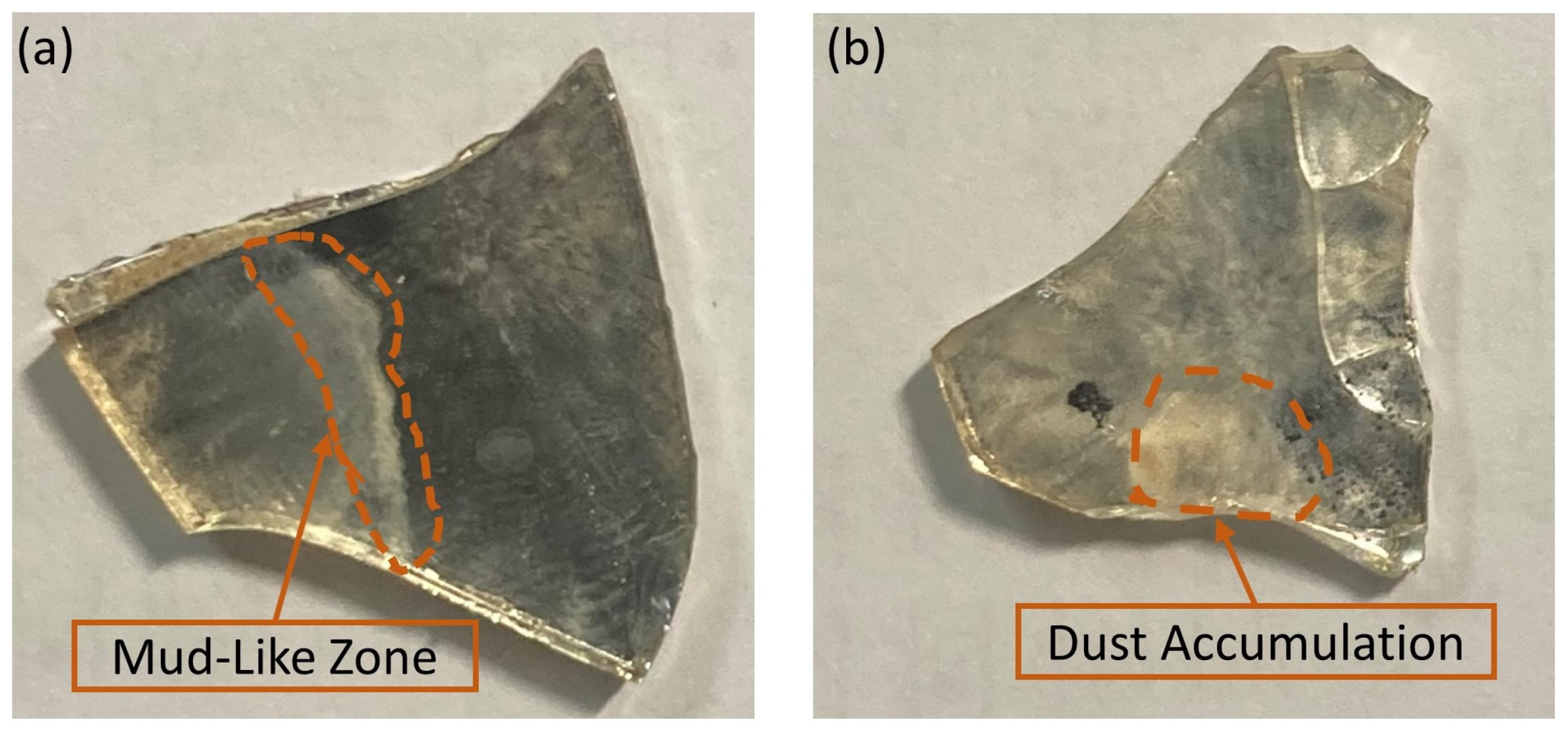
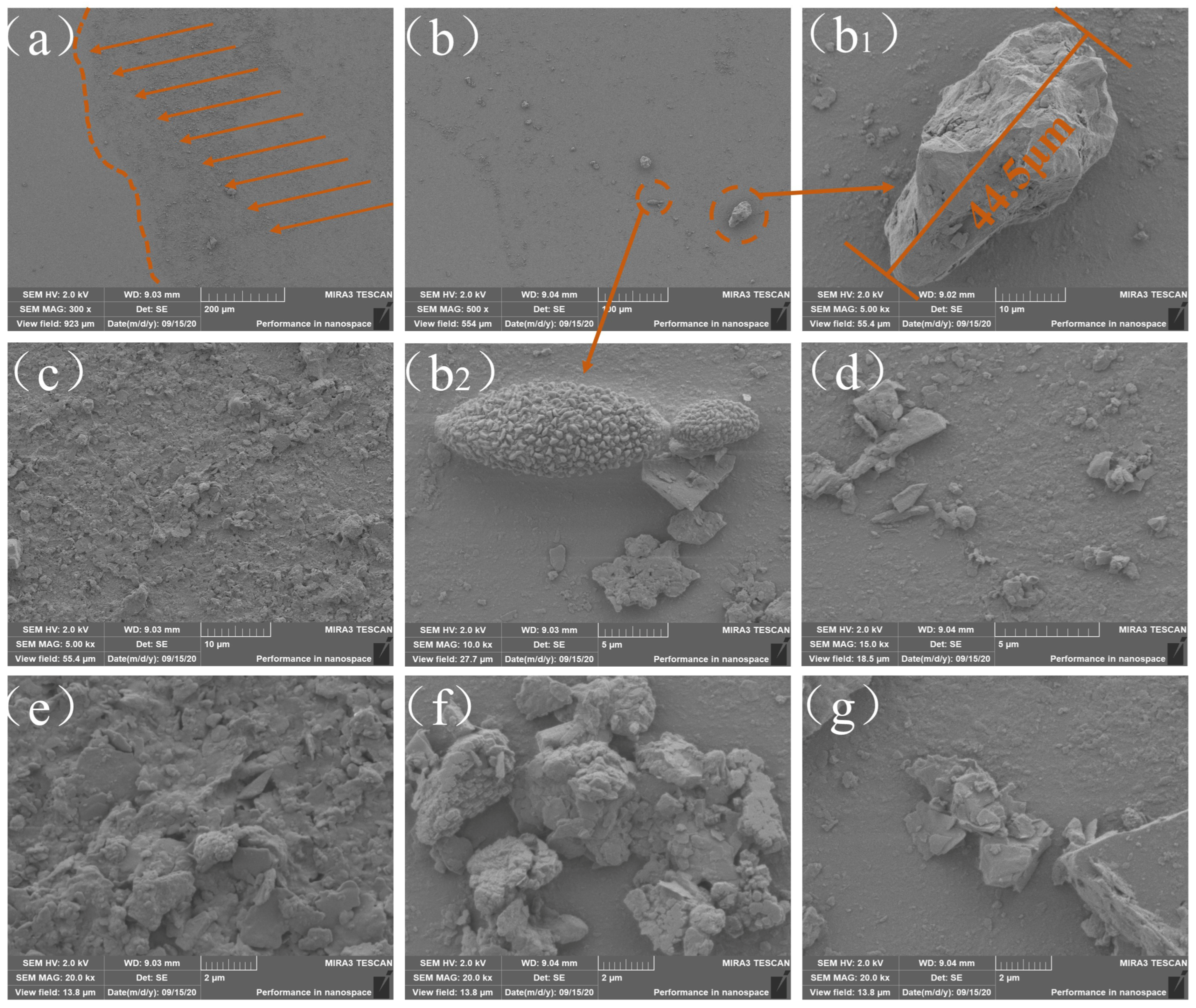
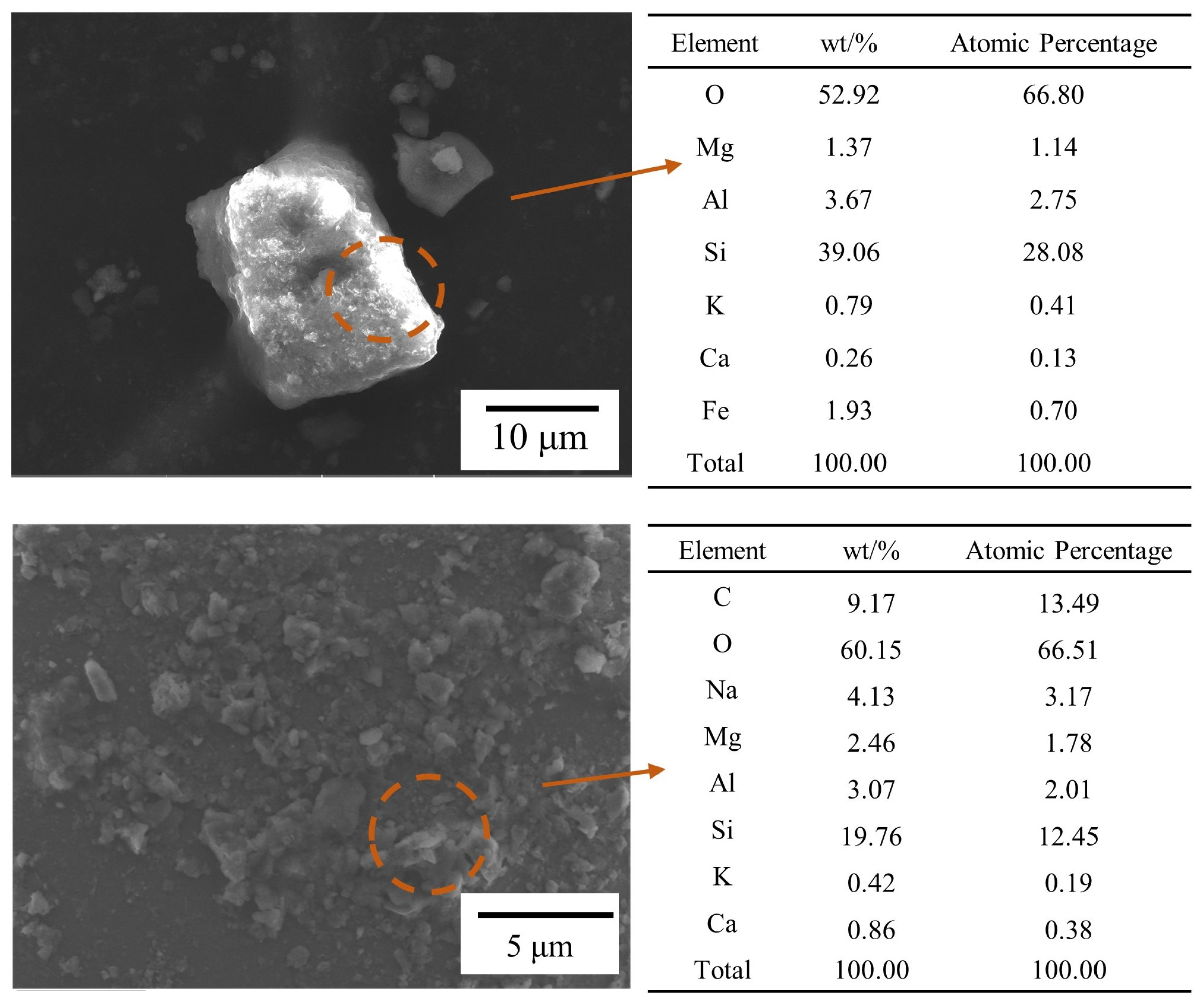
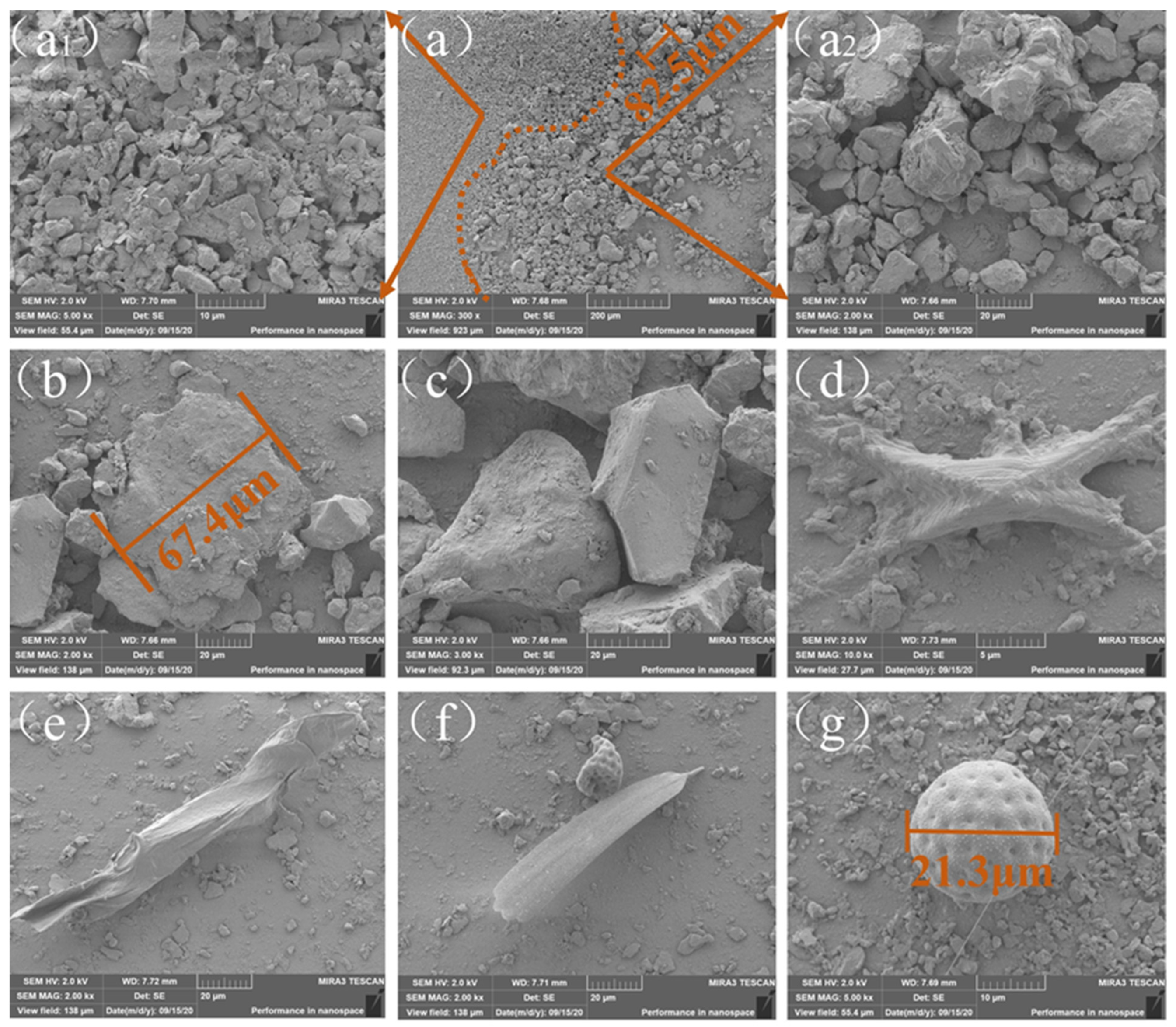
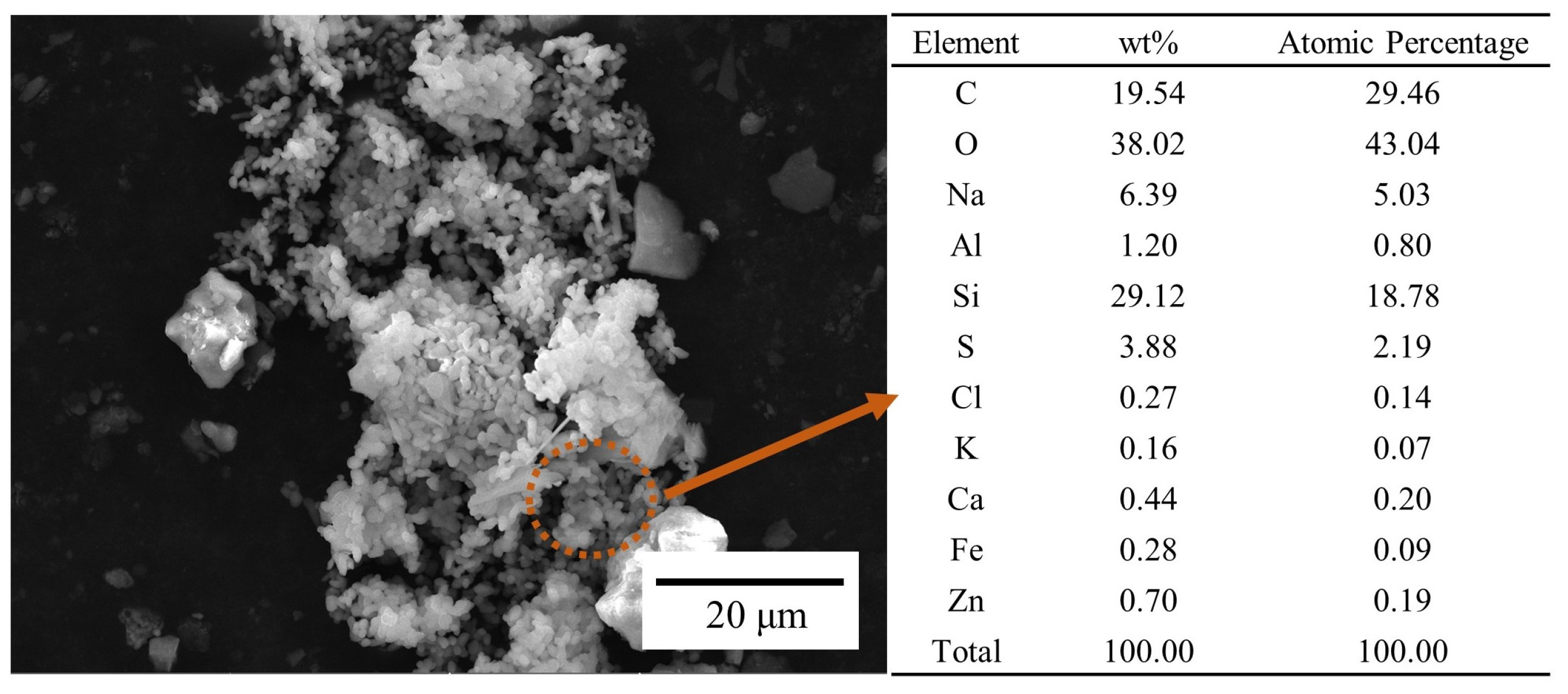
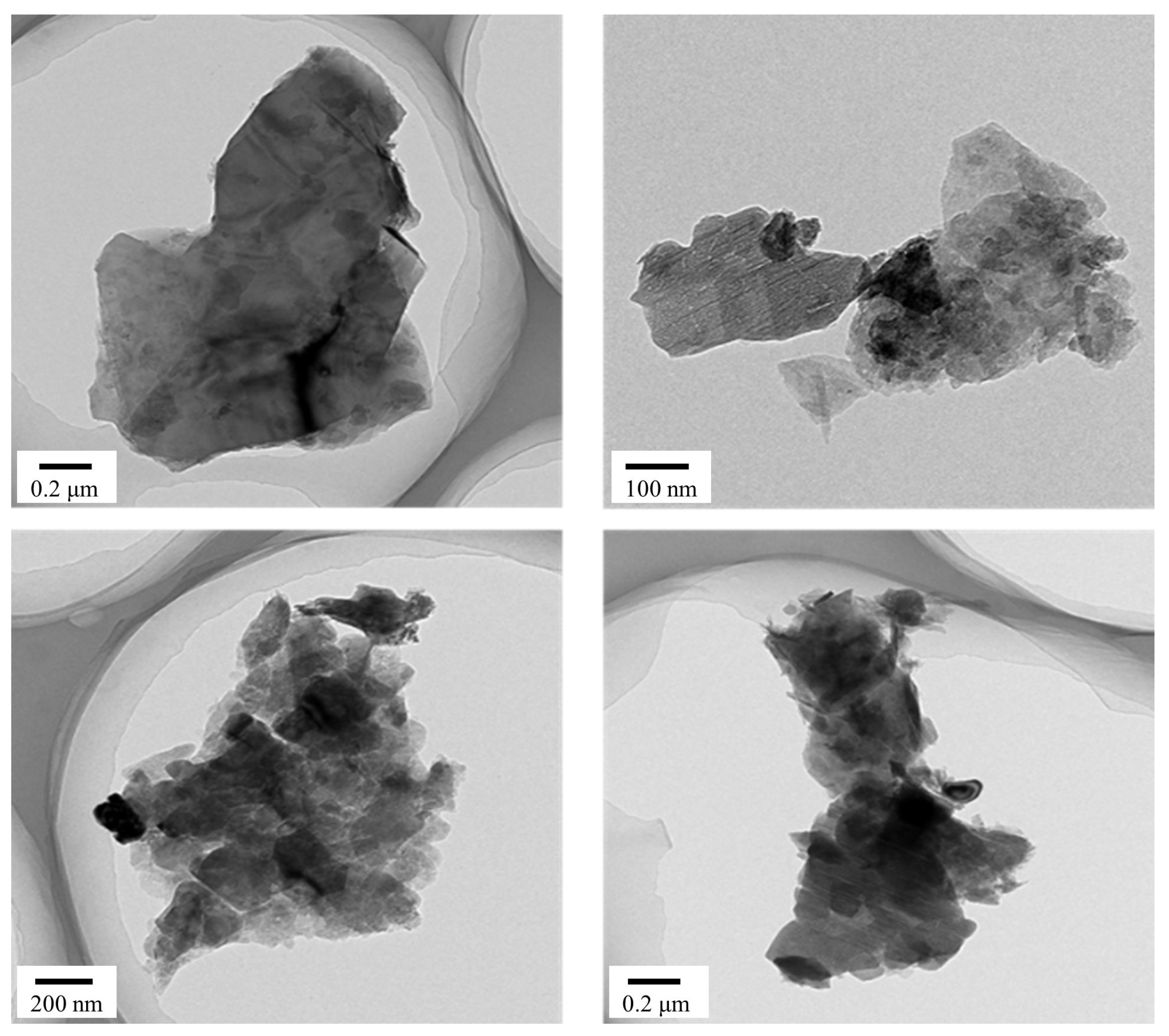
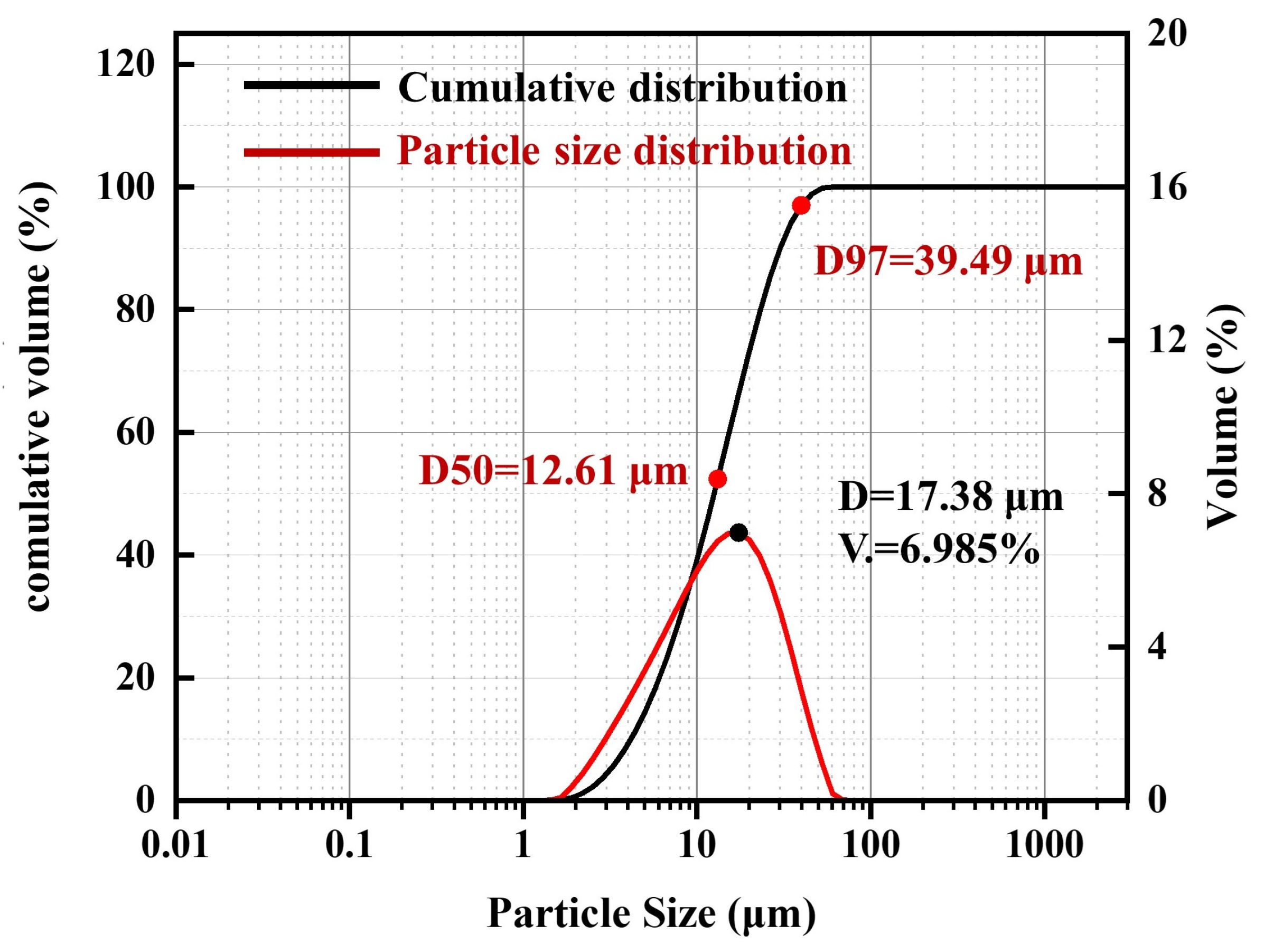
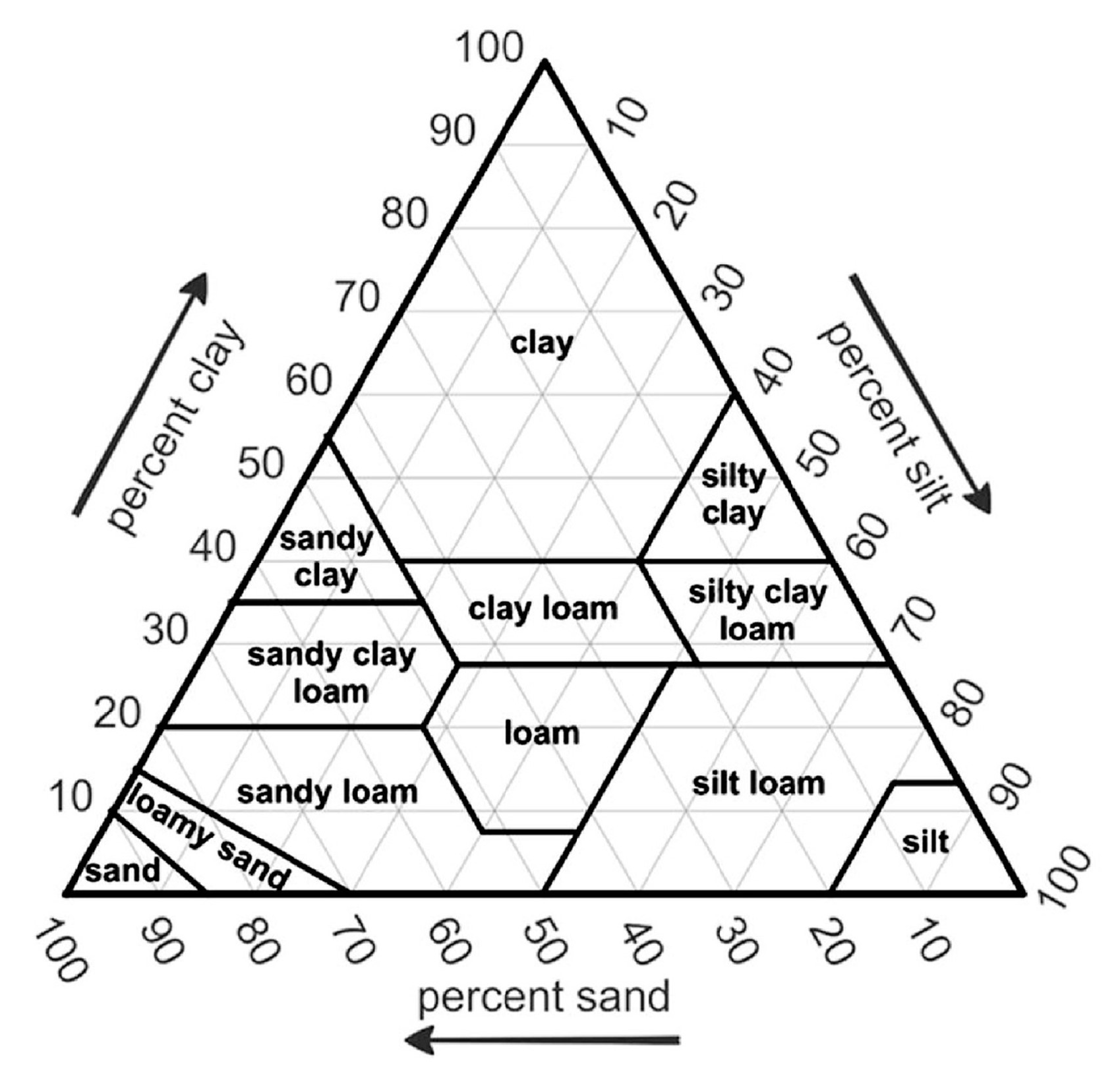
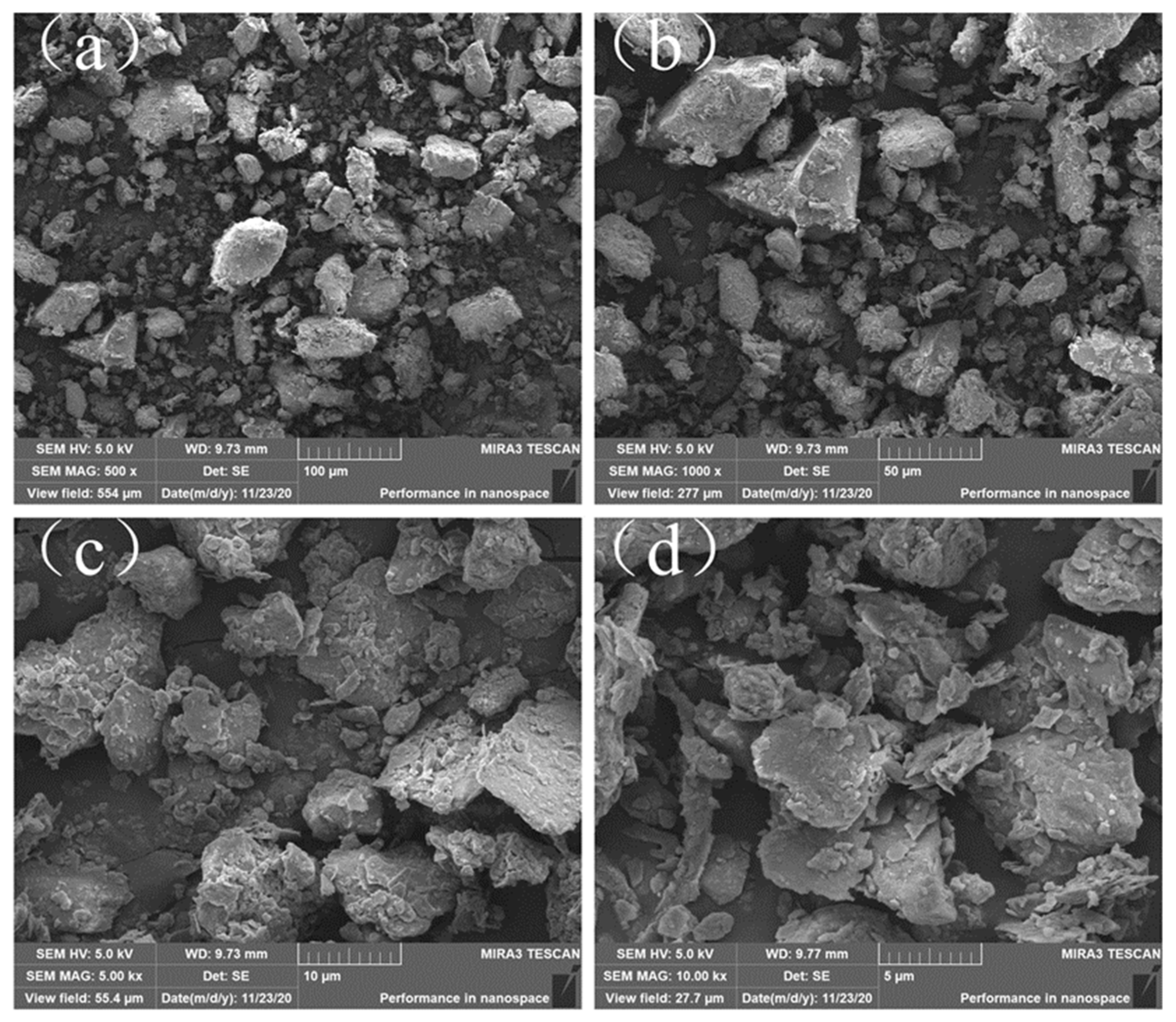
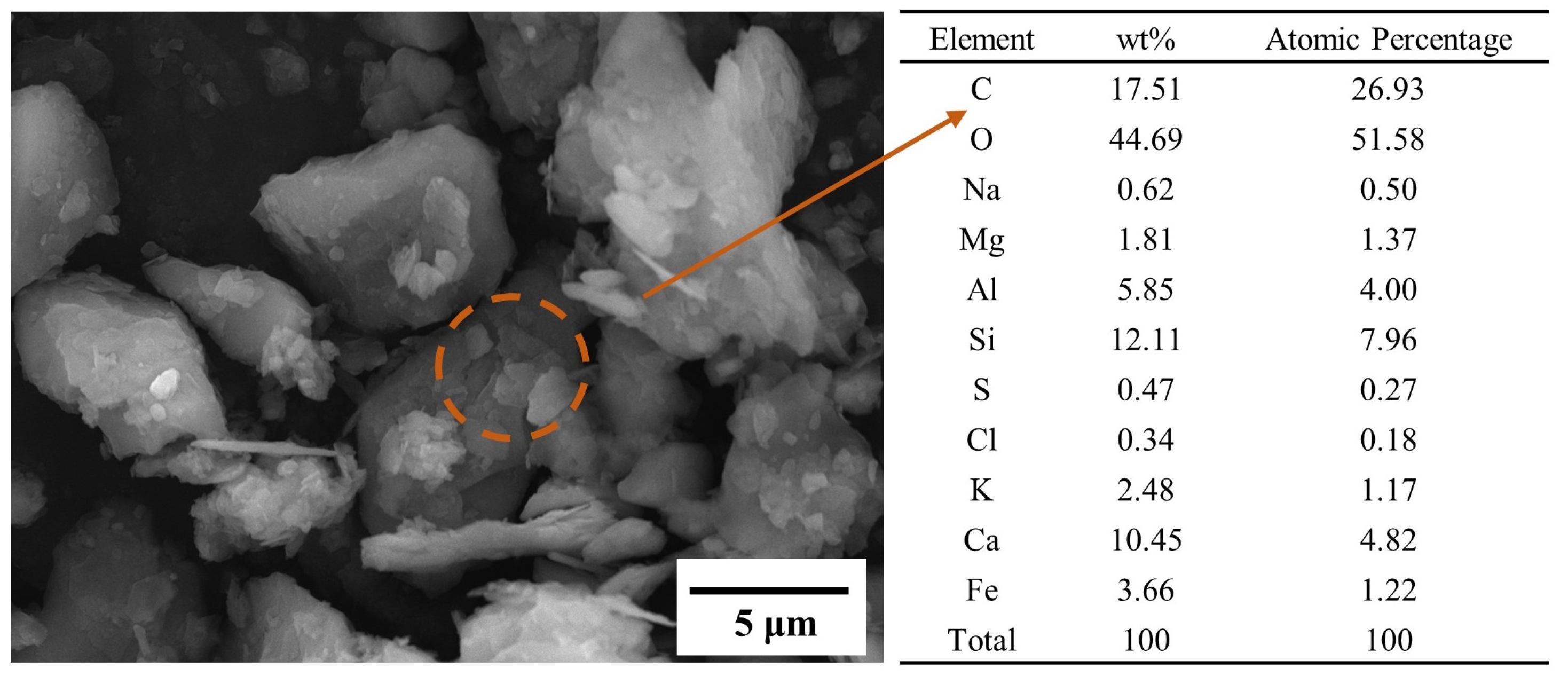
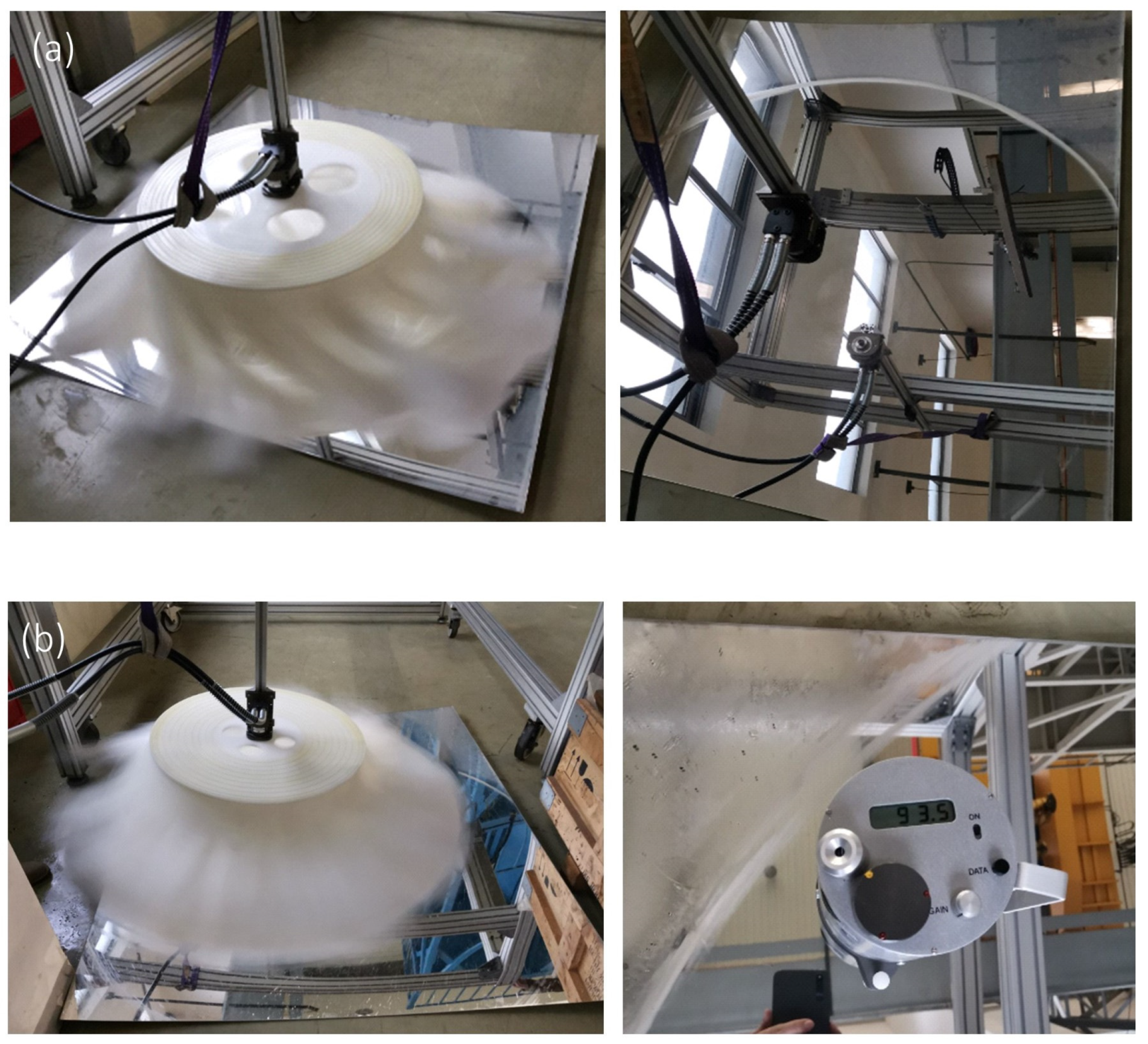

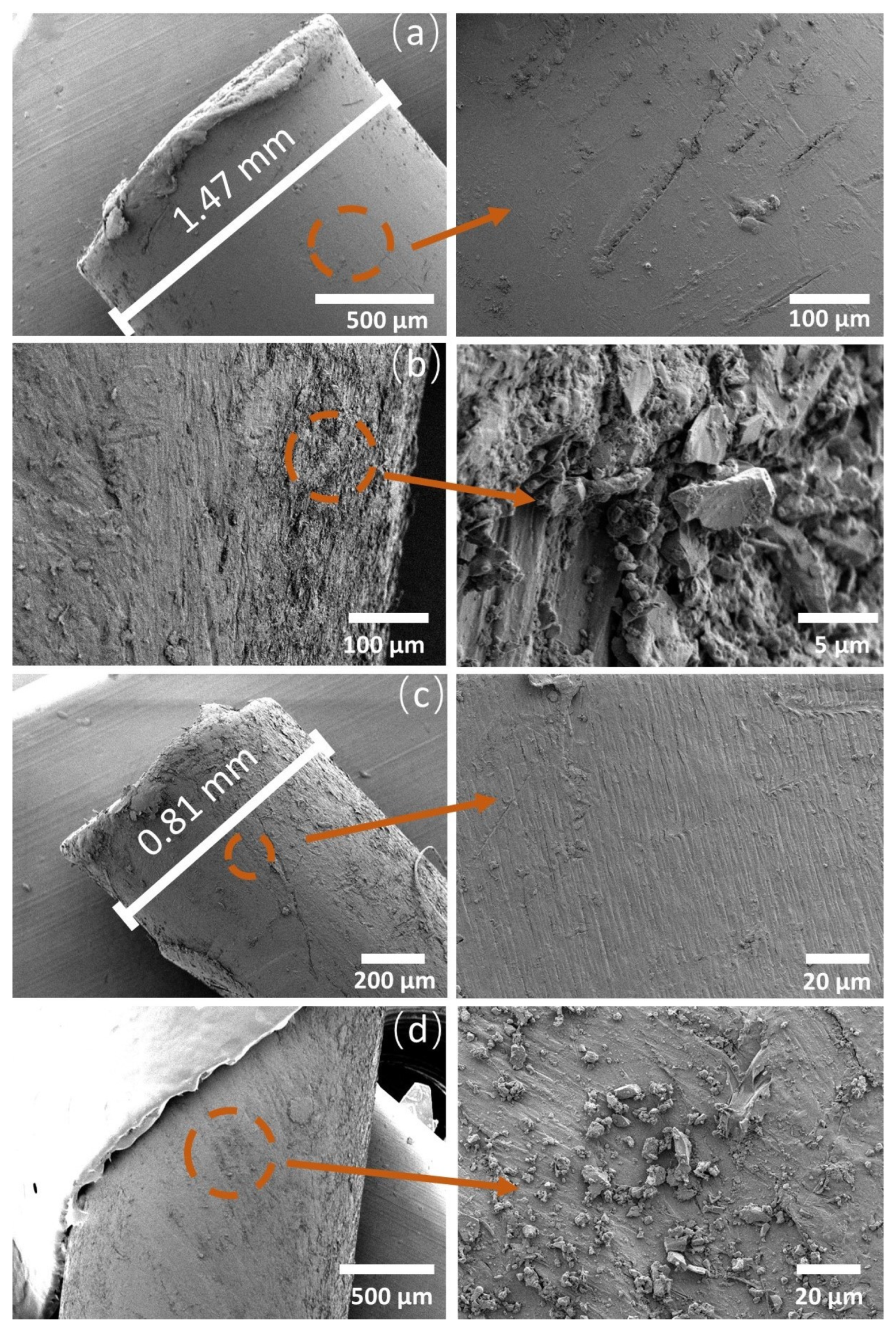
| Particle Size (μm) | Settling Velocity (cm/s) | Retention Time | Removal Process |
|---|---|---|---|
| 0.001 | 4.0 × 10−7 | ~1 day | Agglomeration |
| 0.01 | 1.5 × 10−4 | ~1 week | Agglomeration |
| 0.1 | 2.5 × 10−2 | -- | Nucleation (scoured by rain, etc.) |
| 1 | 2.5 | ~1 month | Sedimentation |
| 10 | 150 | ~12 h | Sedimentation |
| 100 | -- | ~10 min | Sedimentation |
Disclaimer/Publisher’s Note: The statements, opinions and data contained in all publications are solely those of the individual author(s) and contributor(s) and not of MDPI and/or the editor(s). MDPI and/or the editor(s) disclaim responsibility for any injury to people or property resulting from any ideas, methods, instructions or products referred to in the content. |
© 2023 by the authors. Licensee MDPI, Basel, Switzerland. This article is an open access article distributed under the terms and conditions of the Creative Commons Attribution (CC BY) license (https://creativecommons.org/licenses/by/4.0/).
Share and Cite
Wang, C.; Guo, J.; Li, J.; Zeng, X.; Pelenovich, V.; Zhang, J.; Yang, B.; Wang, X.; Du, Y.; Lei, Y.; et al. Microstructure of Surface Pollutants and Brush-Based Dry Cleaning of a Trough Concentrating Solar Power Station. Energies 2023, 16, 3260. https://doi.org/10.3390/en16073260
Wang C, Guo J, Li J, Zeng X, Pelenovich V, Zhang J, Yang B, Wang X, Du Y, Lei Y, et al. Microstructure of Surface Pollutants and Brush-Based Dry Cleaning of a Trough Concentrating Solar Power Station. Energies. 2023; 16(7):3260. https://doi.org/10.3390/en16073260
Chicago/Turabian StyleWang, Chenyang, Jialin Guo, Jingyu Li, Xiaomei Zeng, Vasiliy Pelenovich, Jun Zhang, Bing Yang, Xianbin Wang, Yu Du, Yikun Lei, and et al. 2023. "Microstructure of Surface Pollutants and Brush-Based Dry Cleaning of a Trough Concentrating Solar Power Station" Energies 16, no. 7: 3260. https://doi.org/10.3390/en16073260
APA StyleWang, C., Guo, J., Li, J., Zeng, X., Pelenovich, V., Zhang, J., Yang, B., Wang, X., Du, Y., Lei, Y., & Lu, N. (2023). Microstructure of Surface Pollutants and Brush-Based Dry Cleaning of a Trough Concentrating Solar Power Station. Energies, 16(7), 3260. https://doi.org/10.3390/en16073260






